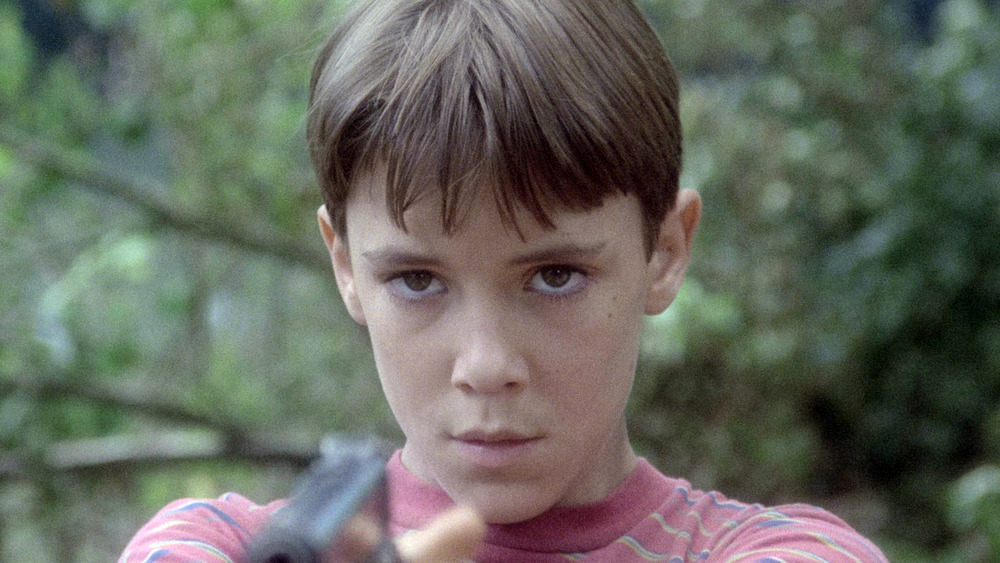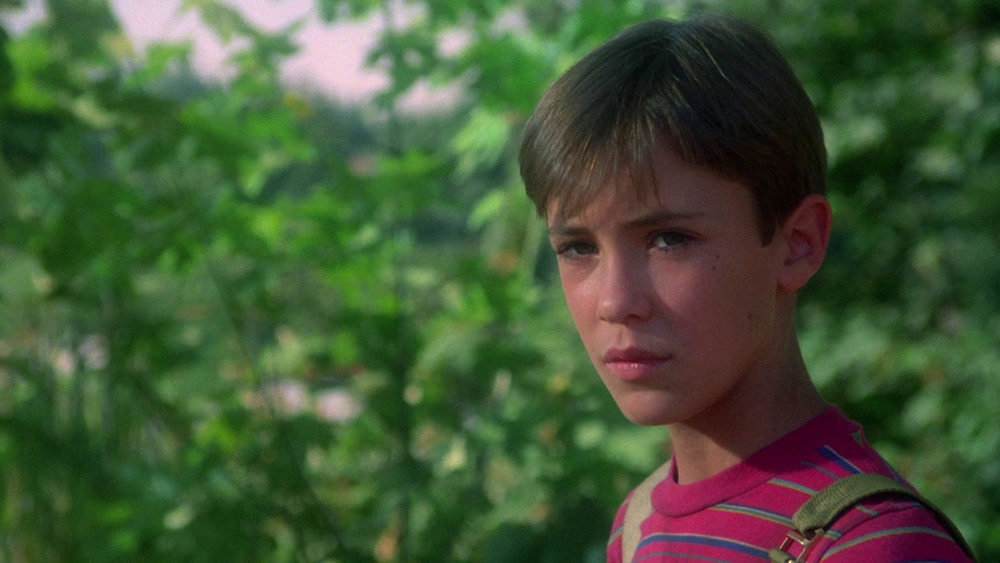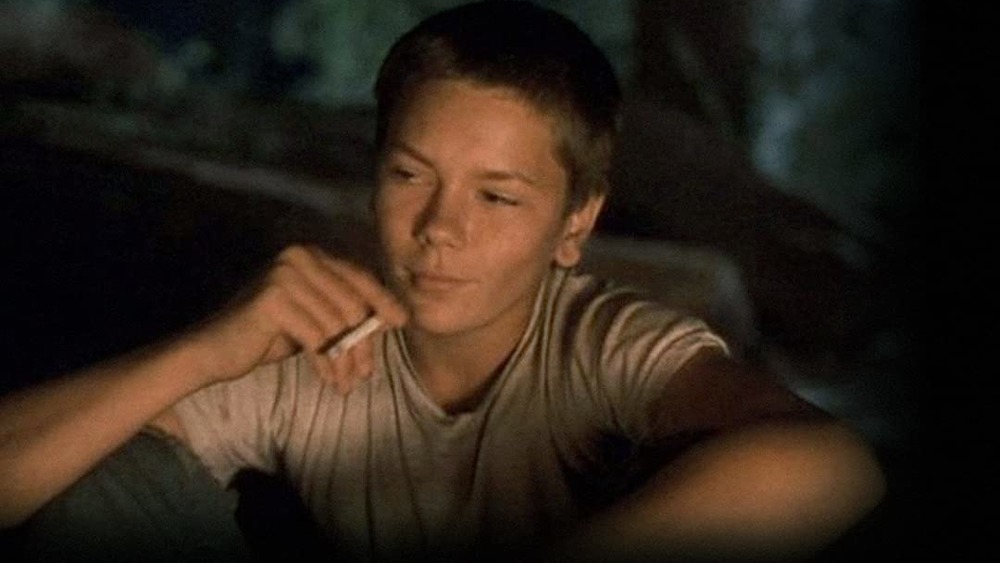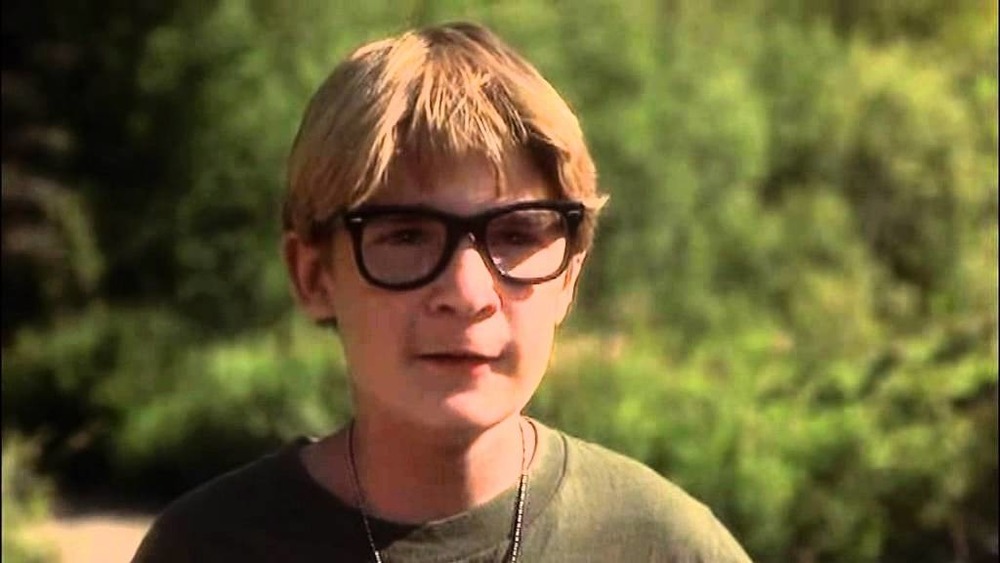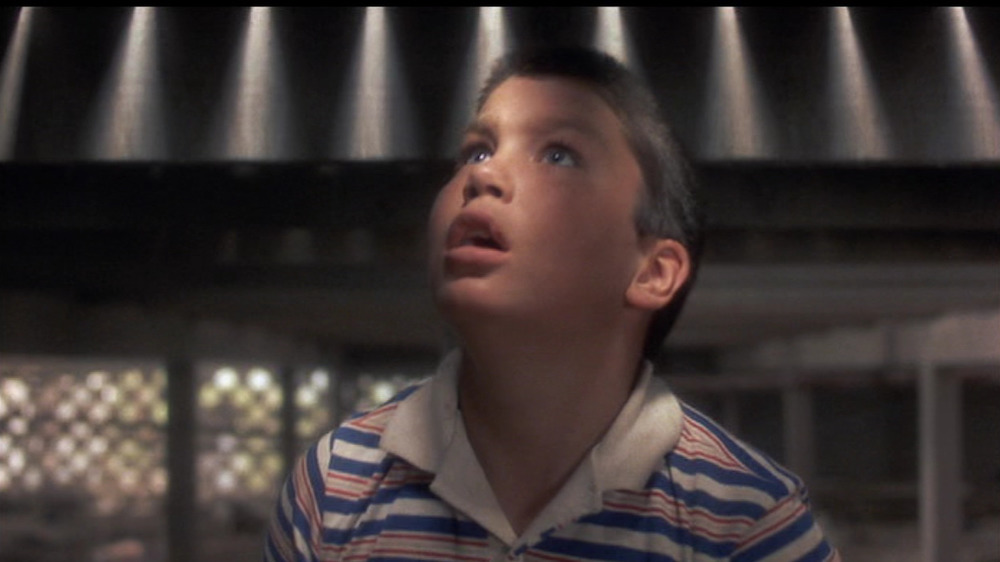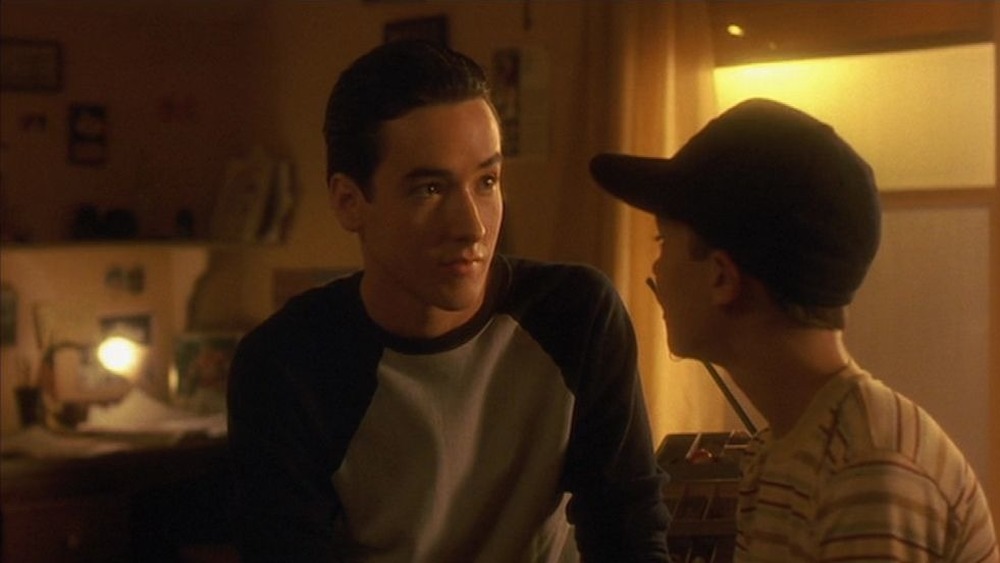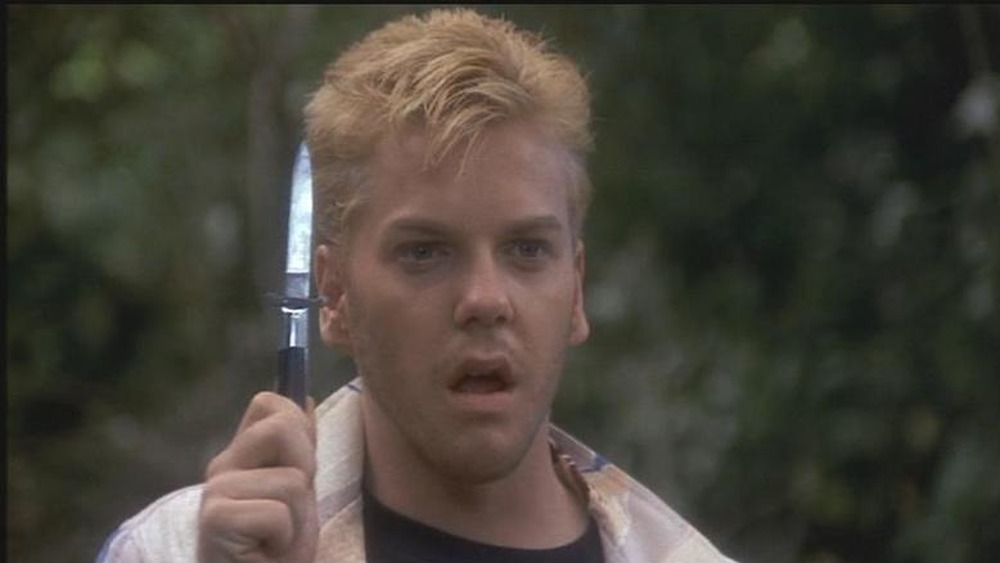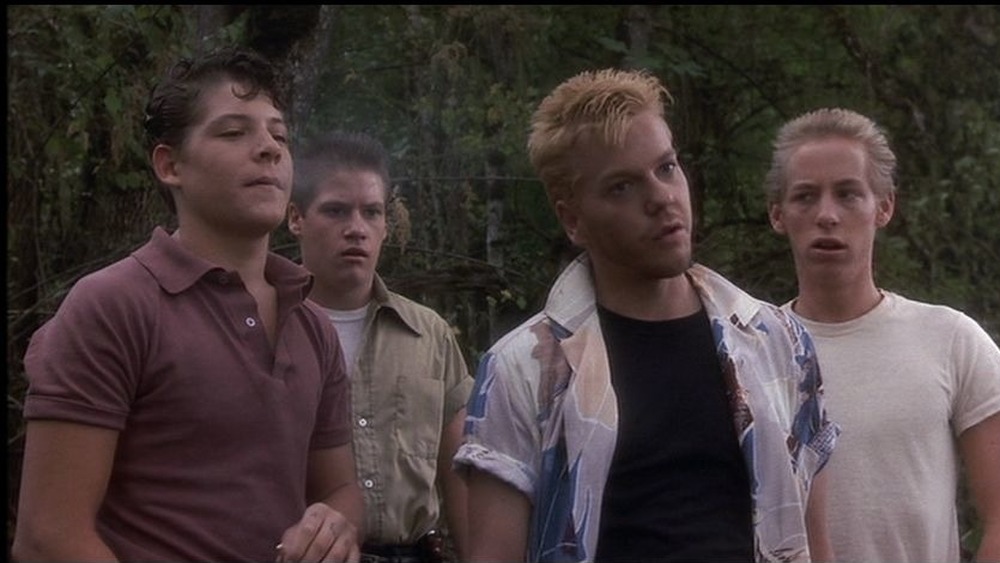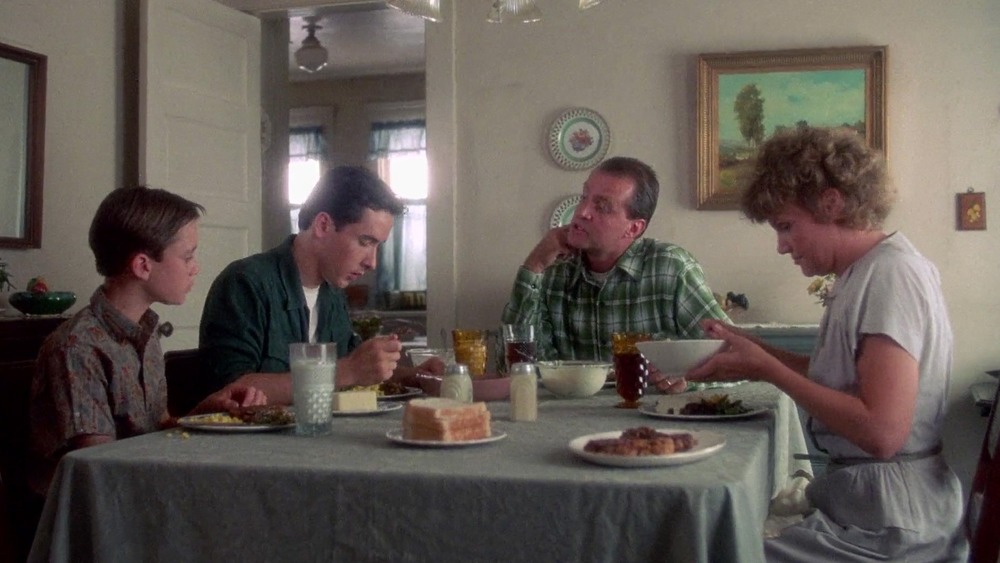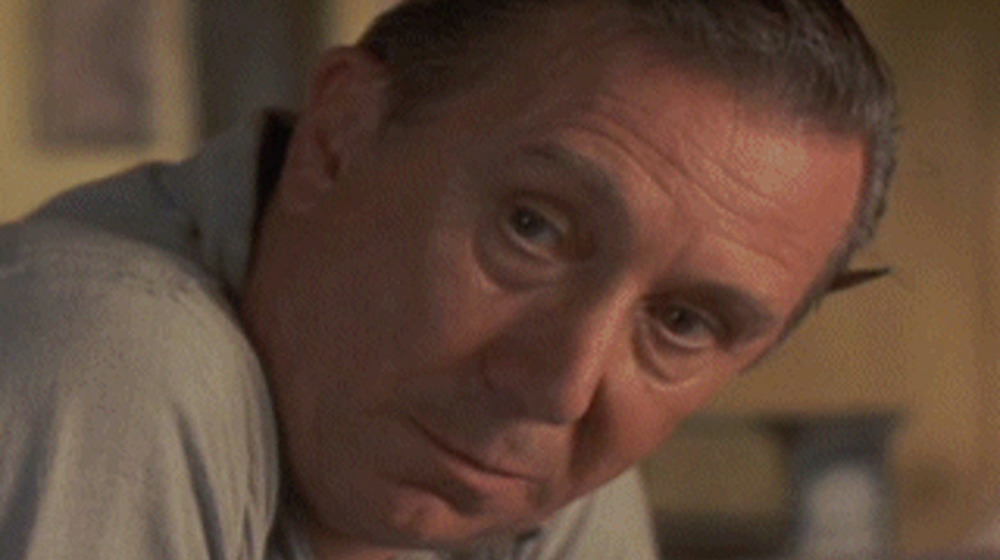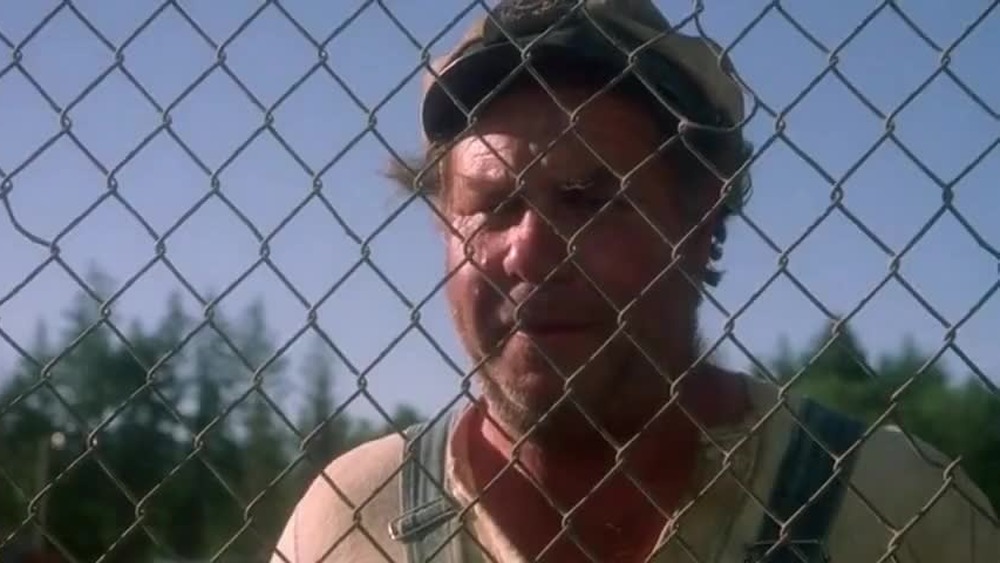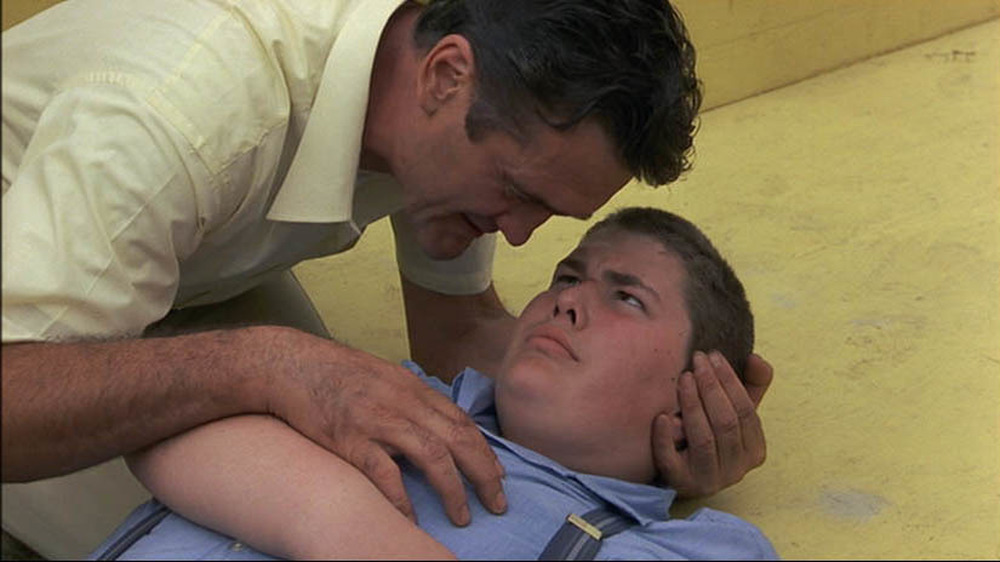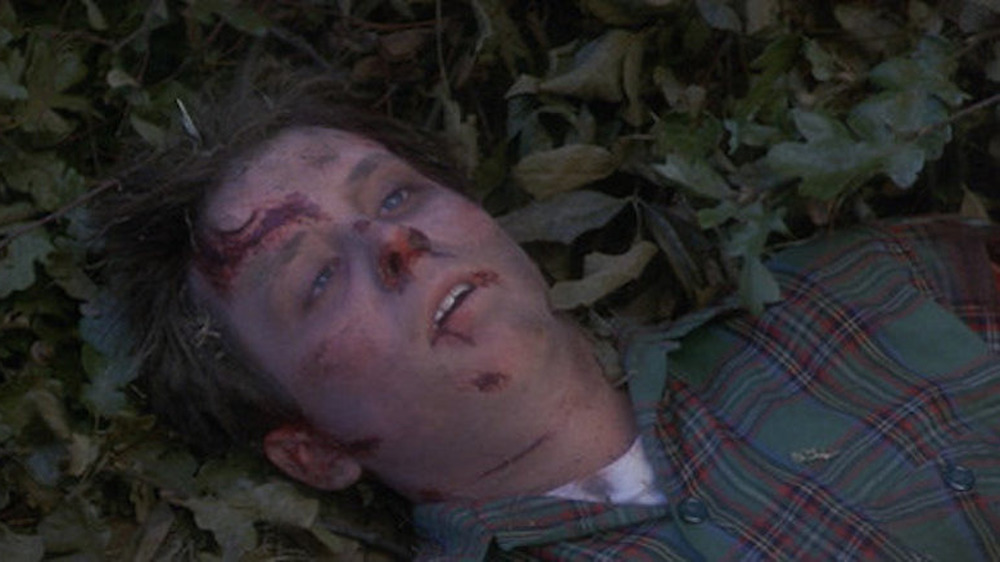What The Cast Of Stand By Me Should Look Like
Based on Stephen King's 1982 novella The Body, Rob Reiner's Stand By Me is one of the most beloved King movies of all time. Narrated by Richard Dreyfuss, the film follows young Gordon LaChance (Wil Wheaton) and his gang of friends as they find the body of a missing local boy rumored to have been hit by a train. Along for the ride is Gordie's best friend Chris Chambers (River Phoenix), a bad boy with a heart of gold, as well as disturbed Teddy Duchamp (Corey Feldman) and naive Vern Tessio (Jerry O'Connell), all of whom experience huge character arcs over the course of the story.
While the boys are faced with a number of life-threatening obstacles, including close brushes with death-by-train, leeches, and a rival gang of older and more violent boys, Stand By Me still remains a beautiful love letter to childhood friendships. But how did Stephen King actually describe this set of incredibly poignant characters? Let's find out. Here's what the cast of Stand By Me should actually look like.
Gordon "Gordie" LaChance
The Body is narrated by Gordon "Gordie" LaChance as an adult, decades after the events of the story take place. Accordingly, he's one of the least described characters. At the start, older Gordie admits to gray hair and not having aged that well, which matches the movie's casting of a grizzled Richard Dreyfuss. However, in a moment of metatext, older book-Gordie talks about having become a famous writer. If we want to see his face, he says, we can look at his author photo. This suggests Gordie might look like Stephen King, without glasses.
In the story, young Gordie wears a Timex watch, old blue jeans, and worn sneakers, most of which match the on-screen costuming. The closest we come to an actual description of him is when the convenience store owner gushes about how Gordie is the "spitting image" of his brother, Dennis. Beyond this, we know Gordie has sunburn on his upper body, as well as his cheeks. Gordie also sustains a number of injuries in the story that don't happen on screen, like skinning his knee and tearing his jeans after escaping from Chopper in the junkyard. Adult Gordie has a scar where that leech bit him, but he lies about how it happened.
Chris Chambers
Rob Reiner's Stand By Me doesn't shy away from talking about the abuse that Chris Chambers is regularly subjected to by his alcoholic father, but King's story takes the descriptions further. King describes in detail the variety of bruises and injuries that mar Chris' body. As in the movie, Chris carries a rolled-up bedroll tied with string and a canteen over his shoulder, where a pack of cigarettes has been tucked into his shirt.
Even though Gordie describes Chris as "the biggest, toughest guy in our gang," and "tough enough to be good at it," Gordie also sees another side of the boy. He describes Chris' face as being "as open and repentant as any choirboy's" after Gordie shoots Chris' accidentally loaded gun. In another conversation, Gordie notes that Chris' eyes are "strangely defenseless." Later, when Chris and Gordie discuss high school and college courses, Gordie observes that 12-year-old Chris' face "crumpled and folded into something older, oldest, ageless ... His eyes were hooded and dead — so dead, man, he could have just fallen out of his own coffin." River Phoenix brings all of this underlying darkness and pain into his performance as Chris Chambers.
As in the film, Chris wears worn blue jeans and scuffed old sneakers in the book. But at the end of the story, Chris has an entire new set of terrible injuries and bruises, thanks to payback from Ace Merrill and his crew in retaliation for stopping them taking Ray Brower's body.
Teddy Duchamp
Of all the characters in The Body, Teddy Duchamp is described in the most detail. First, Teddy has severe scarring on both of his ears from when his father burned him on their stove. What's left of Teddy's ears "looked like two lumps of warm wax." Teddy keeps his hair long, to try and cover his injuries as much as possible: "Teddy had Castle Rock's first Beatle haircut — four years before anyone in America had even heard of the Beatles."
Gordie observes, "Close to being thirteen like the rest of us, the thick glasses and the hearing aid he wore sometimes made him look like an old man ... In spite of the glasses and the flesh-colored button always screwed into his ear, Teddy couldn't see very well and often misunderstood the things people said to him." Teddy also has a wretched, braying laugh that Corey Feldman faithfully reproduces in Stand By Me: It annoys everyone both in the story and on the screen. But his ear injuries are not even remotely as dramatic as they are in the book. After the encounter with Ace and his gang in the novel, Teddy gets hit so hard in the face, his glasses shatter. They leave him alone once they realize he's functionally blind without them.
Vern Tessio
In both King's story and Reiner's Stand By Me, Vern Tessio isn't the brightest penny in the (buried) jar. King describes Vern with an elaborately greased hairstyle inspired by crooner Bobby Rydell, but in the movie, Vern has a utilitarian buzzcut. This adds to the comedy about the comb he brings and loses. King also notes that Vern has really rotten teeth, a detail that didn't make it to the screen.
During the inadvertent over-bridge train dodge, King writes, "The surprise that distorted [Vern's] face was almost comically exaggerated, written as large as letters in a Dick and Jane primer," which perfectly describes how Vern looks in this moment in Stand By Me. However, in the novella, Vern is "a shambling scarecrow with a bare, sunburnt back, the collar of his shirt swinging and dangling below his butt ... His spine stood out in a series of knobs, each knob casting its own crescent-shaped shadow." In the film, he's a chubby kid, and the only time he takes his shirt off is when they have to cross the leech pond.
In the book, Vern gets a huge blister on his foot that slows the boys down just as they're about to reach Ray Brower's body. Vern also has a compulsive habit of licking his lips that didn't make it into the movie.
Dennis "Denny" LaChance
The death of Gordie's beloved older brother Denny is a tragedy that runs through both King's novella and Reiner's adaptation. However, Denny is presented differently in the two versions. In the book, Denny is eight years older than Gordie. They're still close, but not as supportive and intimate as they are in the film. Furthermore, in the book, Denny is in the military, instead of going off to college on a football scholarship. Both the book and movie feature characters who go on about how Dennis and Gordon look exactly alike, but in the book, Gordie sees no resemblance.
The biggest difference between Denny in the book versus Denny in the movie is the moment when Gordie starts picturing Denny's dead body haunting the closet in his old room: "I would imagine him pallid and bloody in the darkness, the side of his head walloped in, a grey-veined cake of blood and brains drying on his shirt. I would imagine his arms coming up, his bloody hands hooking into claws, and he would be croaking: It should have been you, Gordon. It should have been you." Up until this moment in The Body, you almost forget it's a Stephen King story. Stand By Me removes this morbid imaginary encounter between Gordie and his brother, and instead has Gordie's cruel father utter those terrible words in Gordie's nightmare.
Ace Merrill
Each member of Gordie's group has their own personal tormentor. But in the case of the collective, by the end of both King and Reiner's stories, Ace Merrill is the new thorn in their sides. In King's story, Ace wears a red varsity jacket. He has a "DA haircut," which is an elaborate combed hairstyle popular in the '50s. In the movie, as played by Kiefer Sutherland, Ace sports the same hairstyle, but wears a printed shirt over a black tee.
In the novella, Gordie observes, "[Ace] smiled gently, and you could imagine him smiling that same gentle smile just before breaking his cue over the head of some uneducated punk." In the book, during the altercation between Chris and Ace as Chris threatens him with his dad's loaded gun, Gordie notes Ace's face sags with "sudden terror" at the sight of the gun. He soon snaps back: "Ace slowly got control of himself. The muscles in his face tightened again, his lips pressed together, and he looked at Chris the way you'd look at a man who has made a serious business proposition — to merge with your company, or handle your line of credit, or shoot your balls off." Sutherland plays this moment exactly as written in the book. By the end of The Body, Gordie notes that Ace's "DA" has become a crewcut, and his lithe frame has packed on many pounds.
Ace's gang
Bullies like Ace Merrill always need followers, and so Ace has a huge crew that terrorizes Castle Rock. While many of these characters are named, like Jack Mudgett and Fuzzy Brackowicz, they don't actually get descriptions, likely because King's story is short-form rather than a full-length novel. But even Ace's main sidekicks only get passing details of how they look. Chris' brother, Richard "Eyeball" Chambers, played by Bradley Gregg, has a '50s greaser haircut and wears a red varsity jacket like Ace's. However, in the book, Gordie explains that "his right eye was all funny and jittery, which was why everybody called him Eyeball." This character detail is left out of Stand By Me.
Played by Casey Siemaszko and Gary Riley respectively, Billy Tessio and Charlie Hogan are pivotal characters in the story, since they're the two kids who steal a car and find Ray Brower's body in the woods. However, the only physical description of Billy and Charlie given by King in The Body barely details them: "Two pairs of legs clad in tight, wash-faded pegged jeans, two pairs of feet in black engineer boots with side-buckles, came down the steps." In the movie, both boys wear sneakers, and their jeans are baggy.
Mr. and Mrs. LaChance
In both The Body and Stand By Me, Gordie's parents grieve the unexpected death of Denny, their golden boy, the year before. King describes Mr. LaChance as glum-looking while he waters a dead garden, a scene translated exactly to screen with Marshall Bell as Gordie's dad: "His shoulders were slumped. His face, pointed towards the dead garden and not toward me, sagged. There was a certain unnatural sparkle in his eyes that might have been tears ... Now he just looked sad and tired out and used. He was 63 years old, old enough to be my grandfather."
In The Body, Mrs. LaChance (who also doesn't get a first name) is 55, with grey hair and a pink housecoat. Gordie describes all the trouble she had getting pregnant, which is why she was so attached to her "miracle baby," Dennis. In contrast, Gordie was an accidental pregnancy. About his parents, Gordie says, "I won't say they treated me badly, and they sure never beat me, but I was a hell of a big surprise and I guess when you get into your forties you're not as partial to surprises as you were in your twenties." We certainly see this dynamic in Frances Lee McCain as Mrs. LaChance in Stand By Me, both before and after Denny's death.
Mr. Quidacioluo
In The Body, there is a convenience store called Florida Market, run by a nasty old codger named George Dusset. Gordie notes Dusset has "one hammy hand planted on the counter by the big bottle of hardcooked eggs, a toothpick in his mouth, his huge belly rounding out his t-shirt like a sail filled with a good wind." In King's story, Dusset tries to cheat Gordie by putting his thumb on the meat scale, and has a terrible reaction when Gordie calls him out on it: "The frown was now tremendous, the lines on his face deep as fissures." The man proceeds to talk "in a low voice that was ominously confidential ... His swarthy face was flushed and dull, the frown now frozen in place."
In Stand By Me, this conflict doesn't happen, and Florida Market has been changed to Quidacioluo's instead. Played by acting legend Bruce Kirby, Mr. Quidacioluo may have some of Dusset's physical traits, in particular the big belly, but he doesn't try to steal from Gordie, and only reminisces about Denny LaChance's football career.
Milo Pressman and Chopper
To escape the summer heat on their journey to see a dead body, the four friends jump Milo Pressman's junkyard fence to get some shade and fresh water. These scenes play out similarly in both the book and movie. In The Body, Pressman is described as a man over 40, "commonly seen and commonly regarded," with a flattop haircut and "a pot belly." Pressman also wears "sweat-stained fatigues and a New York Giants baseball cap." In the movie, he wears jean overalls and a train engineer cap.
In the book, Pressman's vicious dog, Chopper, is infamous for being trained to "sic specific parts of the human anatomy." He is rumored to be a German Shepherd, a Boxer, a Doberman Pinscher, or a "maniacal Irish Wolfhound," fed a special diet of dog food and chicken blood. When the boys finally see Chopper, they get a surprise: "Instead of some huge hellhound with red, savage eyes and teeth jutting out of its mouth like straight-pipes from a hotrod, I was looking at a medium-sized mongrel dog that was a perfectly common black and white."
In Stand By Me, Chopper appears to be a golden retriever mix with beige fur. In The Body, Chopper actually badly hurts himself against the chain-link fence, and when Pressman gets enraged, Gordie muses, "I thought that Milo looked like a human version of Chopper."
Davie Hogan
King's novella actually contains two stories written by Gordie, told within the bigger story. The first is a crime fiction short inspired by Denny's death, and the second is the campfire story he tells on their way to find Ray Brower's body. That latter tale is about a pie eating contest, starring "this kid, he's our age, but he's fat. He weighs like one-eighty and he's always gettin' beat up and ranked out. And all the kids, instead of calling him Davie, they call him Lard A** Hogan."
As Gordie goes on telling his story within the story, he describes Davie as having a "small smile greasing his thick lips and creasing his thick chops [which] did not change as the Mayor tied his bib around his neck." When Davie's vomit-fueled revenge begins, his streams of projectile puke are purple and blue. They are just as gross as they are in Stand By Me.
Ray Brower
Both The Body and Stand By Me revolve around unfortunate Ray Brower, who is discovered to have been killed by a train. In the novella, Vern spots Ray's "single pale white hand" sticking out of a bramble of bushes. This is how it happens in Stand By Me as well. The Body goes further, however, with Gordie describing "the fingers limply splayed, like the hand of a drowned boy." In The Body, Ray's head is pointed towards the tracks, "arms over his head like a diver about to execute ... His hair was a dark reddish color ... He was wearing a solid color dark green tee-shirt and blue jeans."
More disturbingly, Gordie notices that "the train had knocked him out of his Keds just as it had knocked the life out of his body," and that bugs are crawling all over Ray's corpse. "His eyes were open, terrifyingly out of sync — one was rolled back so far that we could only see the tiny arc of a pupil; the other stared straight up into the storm." There is blood and froth around his mouth, and "the right side of his face was lacerated and darkly bruised." A beetle crawls out of Ray's mouth, terrifying Gordie and the gang and reminding us that this is actually a Stephen King horror story wrapped in a coming-of-age tale. Rob Reiner leaves these grisly elements mostly out of Stand By Me.
